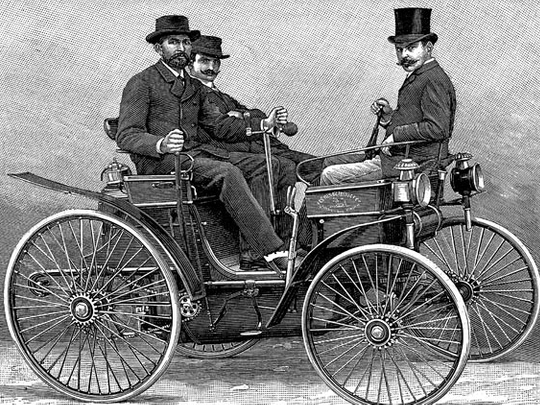
Like most others, the auto industry has been dominated by powerful dynasties right from the Agnellis of Italy to the Fords of America and the Toyodas of Japan. The companies set up by these families have a stranglehold on the global automotive market even to this day. But there aren’t too many who can match the rich heritage of the automobile venture owned by the Peugeot family of France. However, if it were not for one man, Armand Peugeot, the family would still have been known for coffee grinders and salt shakers.
The Peugeots are one of the oldest industrialist families in Europe, having started their business in the early 19th century. And by the time Armand was born, the family had already made its name in manufacturing a wide range of products from kitchenware and farm equipment to hand tools and clock-winding mechanisms.
In 1881, after earning his engineering degree in Paris, Armand went to Britain for a training programme and realised that the era of horse-drawn carriages was coming to an end. On his return, he convinced his cousin Eugene, who ran the family business with him, to diversify and make bicycles and tricycles the very next year. At the World Fair in Paris in 1889, Armand showed off a steam-powered tricycle, made in collaboration with steam specialist, Léon Serpollet. And by 1892, Peugeot began making cars powered by Gottlieb Daimler’s internal combustion engines.
Two years later, Armand entered several of his cars in the 1,200km Paris-Bordeaux-Paris race, the first of its kind in France, and took three of the top four spots.
Encouraged by these wins and the growing public interest in his cars, Armand got his engineer, Gratien Michaux, to develop an engine and was looking to bump up production. But the more conservative Eugene didn’t want to take on such a risk and pulled back, prompting Armand to set up his own company, Société Anonyme des Automobiles Peugeot with a factory in Audincourt.
Starting with a production run of one car a week in 1897, Peugeot grew to making 10 a week by the turn of the century. Although fortunes fluctuated initially, the lightweight two-seater Bebe Peugeot of 1905 became hugely popular and proved a sales success for the company.
Armand, whose only son died young, was left with no male heir to take the business forward and decided to merge his company with Eugene’s in 1910. By the time he stepped down in 1913, handing over the reins to his nephews, Peugeot was the largest carmaker in France with more than 20 per cent of the market share and double the production capacity of rival Renault’s.
Whether Peugeot could sustain this success over the decades as well as Fiat, Ford or Toyota is a different matter. But if today, the Peugeot dynasty is mentioned in the same breath as the Fords, the Agnellis and the Toyodas, then it’s only because Armand realised the huge potential of the internal combustion engine and nudged business in the direction of the motor caar.











